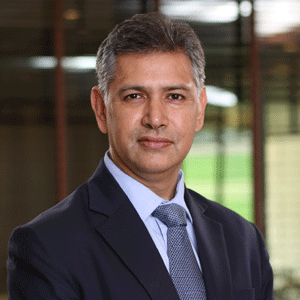THANK YOU FOR SUBSCRIBING

Wavecell: Facilitating Real-time Communications on Field

 Olivier Gerhardt, CEO & Co-founder
Olivier Gerhardt, CEO & Co-founderOlivier Gerhardt, CEO and Co-founder of Wavecell, strongly believes that continuous innovation is required in the field of communications to bring value to customers and solve their pain points, especially the field services sector. In most cases, a field services engineer will need to continuously phone its head office to ask for support in solving onsite issues. These back-and-forth conversations often result in unclear explanations and further delay down-time. To address the challenges brought about by this passive approach, Wavecell delivers a more comprehensive approach in the form of Live Video Interaction. Based on web real-time communication (webRTC), it can be easily integrated into mobile applications and websites.
With Wavecell’s Live Video Interaction solution, a device and a stable internet connection is all a field technician will need in order to get connected to an expert in real time when a problem occurs. “Unlike the traditional way, our Live Video Interaction simplifies and digitizes field services experiences,” says Gerhardt.
Wavecell’s cloud communications platform, today supports both Live Video Interaction and Messaging Solutions (mainly SMS). The messaging solutions can be integrated and serve as triggers, sending automated SMS to field technicians with real-time updates of uptime or downtime on the field.
Once the messaging solution gained stability, Wavecell added Live Video Interaction into its solution suite to better meet the needs of their customers.
Gerhardt first observed that most of the free video calling platforms in the market were primarily for social interaction and simple video calls. Also, these existing platforms fail to support an interaction of multiple teams that need to communicate together at a given point of time. Amid all this, Wavecell’s video solution emerged as a ground-breaking solution for the existing shortcomings. By easily integrating into users’ existing applications, the solution provides additional features such as annotation, screen sharing, co-browsing, geolocation, capturing HD pictures, video call recording, and thus boosting and digitizing user experiences.
While messaging and Live Video Interaction remain standalone solutions, they can also be packaged as a whole solution. The uniqueness of Wavecell’s offering is its mixed channel and broad communications platform made available through simple API for customers to get connected to the platform easily.
Owing to these capabilities, insurance companies are increasingly in favour of Wavecell’s solutions to decrease the time taken for claim approvals such as remote car inspections. The insurees, using the Live Video Interaction, can show the damages to the claims officer and process claims on the spot. Over the last five to six years, the company has been delivering its solutions to banks, fintech, insurance, and other industries that have field services operations. Apart from its continuous efforts to strengthen its technology capabilities, Wavecell is also building its presence in several countries, with a special focus on Southeast Asia, to address customers’ requirements on all levels - global, regional, and local.
Currently, Wavecell is working to ensure that its customers can communicate with users through other messaging applications such as WhatsApp, Facebook Messenger, Line, WeChat, and Viber. For this, the company is currently building an IP messaging solution that aggregates all the messaging apps. According to Gerhardt, most countries have fragmented communications base, and as such Wavecell is hoping to provide a single API for customers to interact easily with users on any messaging app. In days to come, Wavecell plans to offer more communication channels under its umbrella of cloud communications offerings, including IP Messaging.
“Our roadmap is to build real-time communication technologies, for businesses to communicate with their users in as many channels as possible but through one single gateway—Wavecell,” concludes Gerhardt.
Gerhardt first observed that most of the free video calling platforms in the market were primarily for social interaction and simple video calls. Also, these existing platforms fail to support an interaction of multiple teams that need to communicate together at a given point of time. Amid all this, Wavecell’s video solution emerged as a ground-breaking solution for the existing shortcomings. By easily integrating into users’ existing applications, the solution provides additional features such as annotation, screen sharing, co-browsing, geolocation, capturing HD pictures, video call recording, and thus boosting and digitizing user experiences.
While messaging and Live Video Interaction remain standalone solutions, they can also be packaged as a whole solution. The uniqueness of Wavecell’s offering is its mixed channel and broad communications platform made available through simple API for customers to get connected to the platform easily.
Owing to these capabilities, insurance companies are increasingly in favour of Wavecell’s solutions to decrease the time taken for claim approvals such as remote car inspections. The insurees, using the Live Video Interaction, can show the damages to the claims officer and process claims on the spot. Over the last five to six years, the company has been delivering its solutions to banks, fintech, insurance, and other industries that have field services operations. Apart from its continuous efforts to strengthen its technology capabilities, Wavecell is also building its presence in several countries, with a special focus on Southeast Asia, to address customers’ requirements on all levels - global, regional, and local.
Currently, Wavecell is working to ensure that its customers can communicate with users through other messaging applications such as WhatsApp, Facebook Messenger, Line, WeChat, and Viber. For this, the company is currently building an IP messaging solution that aggregates all the messaging apps. According to Gerhardt, most countries have fragmented communications base, and as such Wavecell is hoping to provide a single API for customers to interact easily with users on any messaging app. In days to come, Wavecell plans to offer more communication channels under its umbrella of cloud communications offerings, including IP Messaging.
“Our roadmap is to build real-time communication technologies, for businesses to communicate with their users in as many channels as possible but through one single gateway—Wavecell,” concludes Gerhardt.

I agree We use cookies on this website to enhance your user experience. By clicking any link on this page you are giving your consent for us to set cookies. More info













